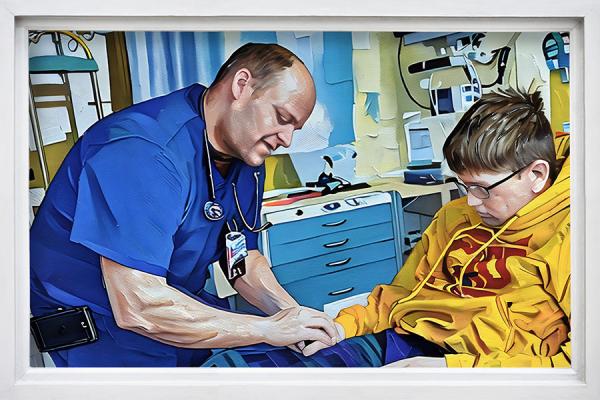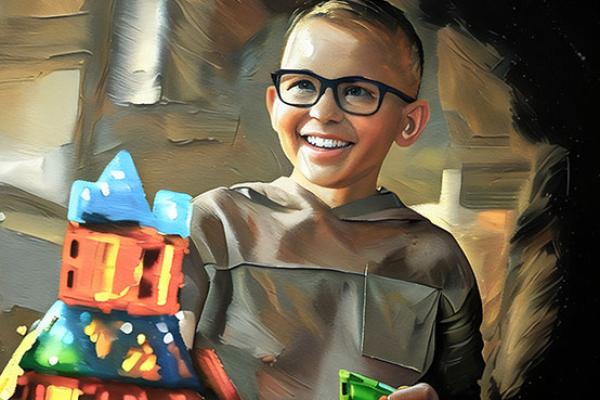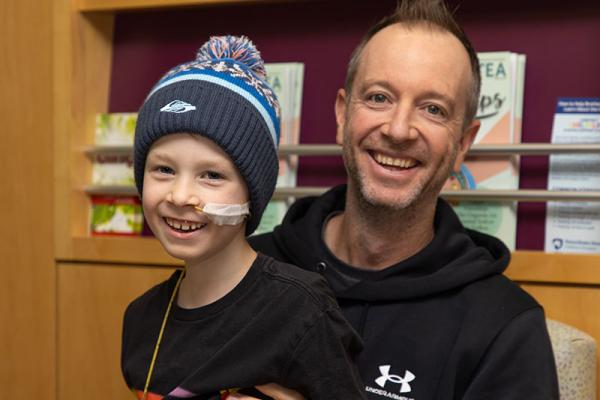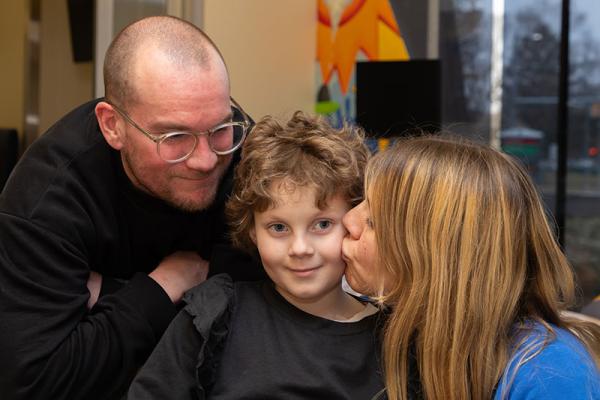
Skilled trauma team provides best chance for recovery
Some nights, as Nicole Wamsher watches her 11-year-old son Cameron sleep, she is overwhelmed by the thought of how close she came to losing him. Three years ago, Cameron was struck by a car and landed on another while crossing the street near their home in Lebanon, suffering devastating injuries to his skull, brain and internal organs.
“I'm so thankful he’s alive because I don't know if I would be able to survive without him,” she says. “I feel blessed to be his mom and to have been given a second chance at that.”
Rapid response to a crisis
As Nicole remembers the terrifying moments after the accident, she also recalls the swift actions that followed. The first responders to the accident scene quickly assessed the severity of Cameron’s injuries and made the crucial decision to have him airlifted to Penn State Health Children’s Hospital, the only Level 1 pediatric trauma center between Pittsburgh and Philadelphia.
At the hospital, the trauma team sprang into action, using their specialized skills and expertise to guide his care. With a life-threatening epidural hematoma, a type of brain bleed that progresses quickly, the neurosurgery team performed emergency surgery to relieve the pressure on his brain, a step vital to his survival. The pediatric surgery team then skillfully repaired the severe damage to his intestines. Each step was crucial in stabilizing his condition and giving him the best chance for recovery.
“The doctor explained that Cameron had extensive trauma to his brain and his internal organs,” Nicole says. “But other than his skull fracture, he didn’t have any broken bones.”
Facing the unknown
When Nicole and her husband Kyle asked how long Cameron might remain in a coma, the doctors cautioned them to prepare for weeks.
“I just remember thinking, ‘What Cameron are we going to have after this?” Nicole says. “The doctor explained the next 72 hours were so important in determining how bad his brain injury was.”
That first night in the pediatric intensive care unit was filled with uncertainty. The steady beep of monitors and hum of medical equipment underscored their fear.
“I didn’t eat. I didn’t drink. I just remember the nurses taking care of him, the doctors wanting to talk to us, and feeling like I might pass out because I didn’t want to take care of myself,” Kyle says. “I just wanted to be there for him as much as I could.”
Throughout the night, they watched as Cameron’s nurse spoke to him softly, reassuring him with each step as he cared for him.
“He was having conversations with Cam like he was awake,” Kyle says. “I feel like he was meant to be there for our son. It was reassuring to see someone care so much and invest his whole self in Cam’s care.”
Signs of hope
During the next few days, Cameron began showing signs of responsiveness. The swelling in his brain decreased, and he began to breathe on his own. Four days after his accident, he emerged from his coma, and doctors removed the ventilator.
“As soon as he squeezed my hand and said, ‘Where’s my tablet?’ I smiled,” Nicole remembers. “I was like, ‘That’s my Cameron. That’s my son.”
That moment marked a turning point. Despite the challenges of his injuries, Cameron made remarkable progress in the following weeks.
Since he had been intubated, he needed to relearn basic functions like swallowing, eating and drinking. His care team closely monitored his digestive system to make sure it was functioning properly after the extensive reconstruction of his intestines and colon.
Cameron also needed physical, occupational and speech therapy to recover from his brain injury. These therapies helped him regain control of his body, from walking and running to hand-eye coordination. Each session was a step forward not only for his body, but also his confidence.
The road to recovery
Twenty-one days after he was admitted to the Children’s Hospital, Cameron had improved enough to be transferred to a nearby inpatient rehabilitation facility, where his doctors could continue overseeing his care.
“This level of continuity of care is rare,” says Anthony Tsai, MD, pediatric trauma surgeon. “It requires a Level 1 trauma center and a tertiary referral center like ours, powered by our College of Medicine. Only an academic medical center can offer this specialized care, with all necessary systems and providers in place. Many patients with injuries like Cameron’s would not survive at a community hospital.”
After a week of inpatient therapy, Cameron was discharged to continue therapy on an outpatient basis. Although his head injury presented some challenges at first, he made rapid progress through outpatient speech and occupational therapy.
Today, Cameron is fully recovered, playing football and other sports with his dad.
“My family owes Penn State Health everything,” Kyle says. “They saved my son after the worst accident I've ever seen. Honestly, I'm pretty sure they built him back up stronger than before. I’m forever grateful.”
Cameron's care team:
Providing the best care possible for the kids
Words alone aren’t enough. You have to prove through actions that you have the knowledge to help their child recover.
Making a difference one patient at a time
Dr. Tsai’s skill at complex procedures is matched by his genuine love of caring for children. He has a natural gift for making kids smile and putting them at ease.







